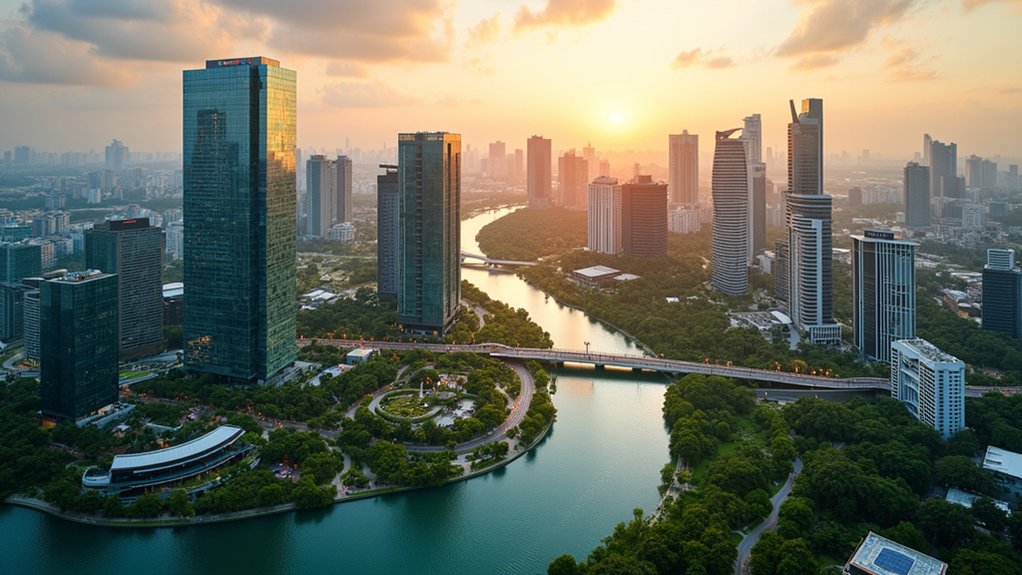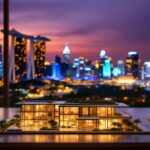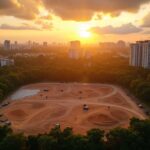Jurong Lake District, situated in Singapore’s West Region, is emerging as a major business district outside the city center. It represents a strategic shift in the nation’s urban planning approach to economic decentralization. The district is envisioned as a vibrant mixed-use area combining work, live, and play elements, encompassing both Jurong Gateway and Lakeside precincts while incorporating extensive green spaces and water features.
Singapore’s West Region is being transformed into a dynamic business hub that seamlessly integrates commercial, residential, and recreational spaces with nature.
As a key economic hub alongside Jurong Innovation District and Tuas Port, the development is projected to create 100,000 new jobs and add 20,000 new homes by 2040 to 2050.
The district’s sustainability framework establishes ambitious environmental benchmarks, with new developments targeting net zero emissions by 2045, ahead of Singapore’s national target. All developments must achieve BCA’s Green Mark Platinum Super Low Energy rating, while district cooling systems will enhance energy efficiency across the precinct.
Transportation planning anticipates that at least 85% of commuting trips will utilize walking, cycling, or public transport by 2035. This will be supported by solar energy maximization on suitable surfaces.
Infrastructure connectivity will be substantially enhanced through the Jurong Region Line, expected by 2029, and the Cross Island Line Phase 2, anticipated by 2032. These will complement existing East-West and North-South lines.
The development features an integrated transport hub combining civic institutions, retail, and office spaces atop a bus interchange. Multi-level pedestrian paths and extensive cycling networks will facilitate movement throughout the district.
Economic opportunities include a 6.5-hectare master developer site available for innovative land use, alongside flexi-use sites offering flexibility in zoning and land tenure to support business growth.
The district provides access to top universities for R&D talent, fostering an innovation ecosystem that encourages collaboration among businesses. KCAP’s comprehensive masterplan, unveiled in October 2017, emphasizes innovative architectural solutions and the integration of natural landscapes with urban infrastructure to create iconic landmarks within the district.
Environmental features distinguish the development, incorporating 100 hectares of green spaces, 70 hectares of water bodies, and 17 kilometers of waterfront areas.
Jurong Lake Gardens contributes to the district’s natural character while preserving native fauna and enhancing biodiversity. The growing real estate market optimism reflects in the increase of registered agents from 34,427 in 2023 to 35,251 in 2024, demonstrating confidence in Singapore’s property market developments like Jurong Lake District.
Plans for a new 120-hectare precinct with mixed-use developments position the district as a living laboratory for innovative urban solutions.





